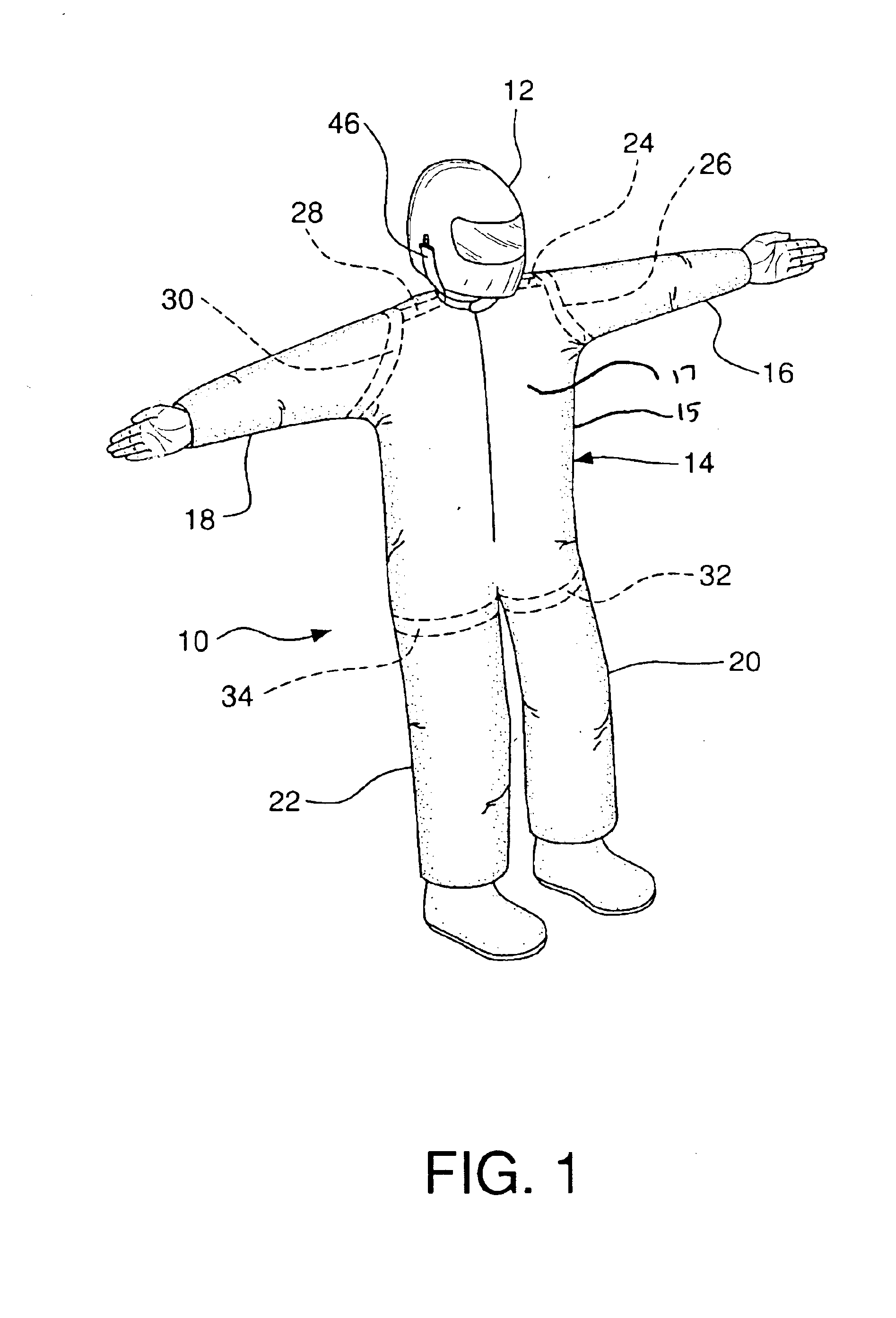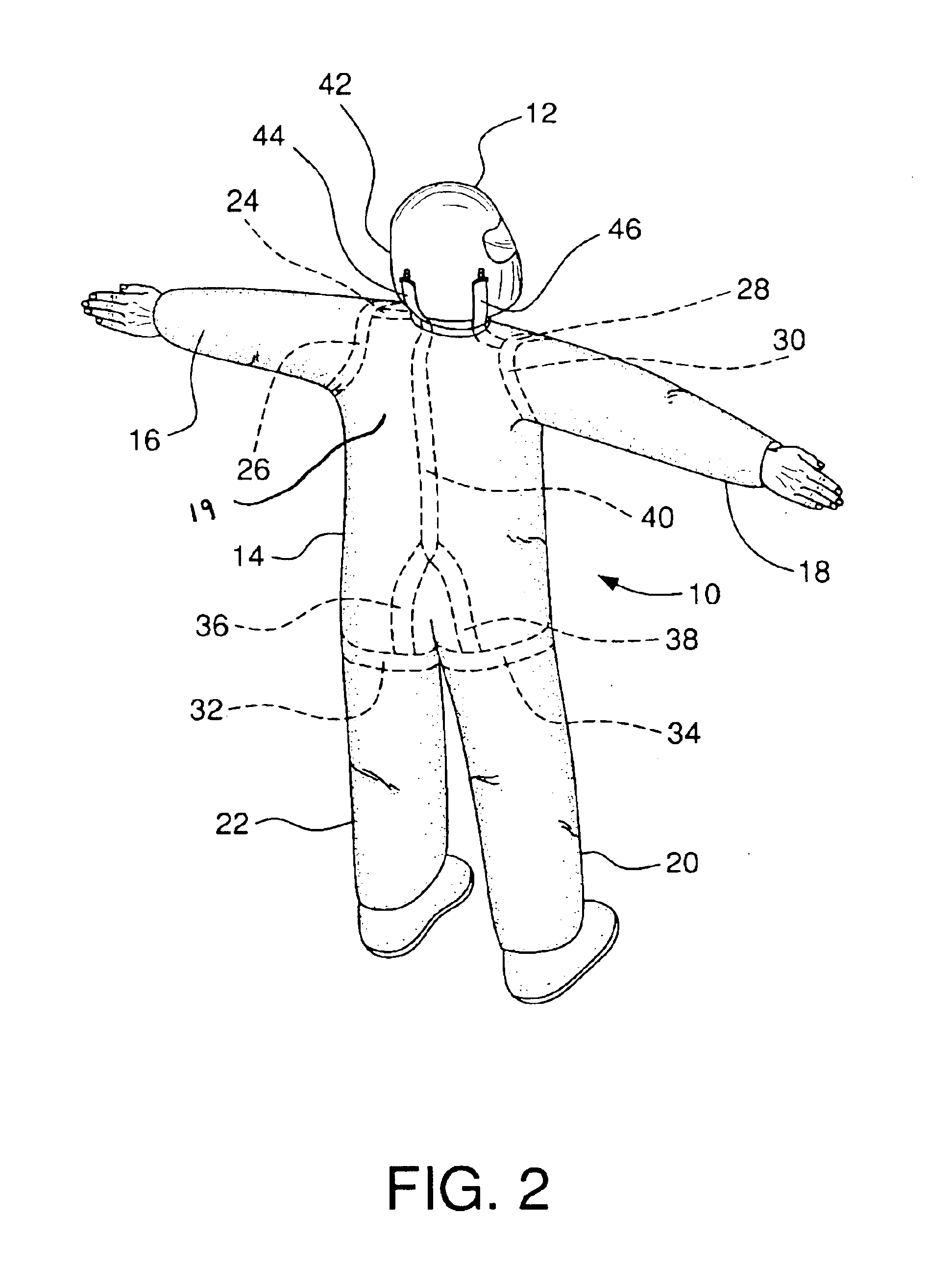Racing is a dangerous sport.
However, different injury patterns, and despite the use of standard safety devices, tragic injuries and deaths from head and neck injuries have continued to occur.
However, while a helmet may provide protection to a wearer's head from injuries caused by
impact with foreign objects, helmets are often inadequate to prevent the violent motion of the head and the bending of the neck of the wearer caused by the
momentum of a sudden impact.
In sudden frontal or angled frontal decelerations, the racers protective helmet becomes a 100+ pound
projectile that, instead of protecting the racer, can actually increase the severity of the
resultant injuries.
While all have some protective value, none are without shortcomings--whether it be the cost, the restrictive nature of the device (or the perceived restrictiveness), lack of comfort, difficulty in wearing or attaching the device, or the device's lack of flexibility.
Unfortunately, a helmet will not prevent the driver's head from the violent forward or lateral motion caused by
inertia and external forces.
Such violent movements of the head and neck frequently result in traumatic and disabling injury to the spine, supporting skeletal muscles,
spinal cord, and brain.
In recent years, several of the world's most renown racecar drivers have been involved in crashes that resulted in serious injuries, or even death, from a
skull fracture caused by violent whipping of the head.
One common problem with nearly all existing restraint devices is the fairly high cost associated with the purchase of a
system.
However, there are many other drivers who compete on a much more limited basis, and as such, often do not have the financial resources of the full-time professional racecar drivers.
The relatively high cost of existing head and neck restraint devices has the effect of creating a situation whereby drivers, because of cost concerns, end up not wearing this essential
safety equipment--an obviously undesirable result.
Another problem associated with existing restraint devices--particularly those that require the user to don them over or under his racing suit--is that a head and neck restraint has to be right for each individual driver.
What is right for one person may not be right for another.
Further, by increasing the number of variables that must be attended to, the chances of something critical being overlooked also increase accordingly.
As Hubbard himself later admitted in a subsequent patent for an improved version of his HANS device (U.S. Pat. No. 6,009,566), the apparatus disclosed in U.S. Pat. No. 4,638,510 was lacking in at least one respect, namely, the fact that the loading from the tethers had to be resisted by bending of the collar and yoke of the head and neck support apparatus.
As described by Hubbard in U.S. Pat. No. 6,009,566, the device of U.S. Pat. No. 4,638,510 often interfered with the bottom of the occupant's helmet.
In fact, at least up until just very recently, drivers were unable themselves to attach a HANS device to their helmets.
Further, despite its popularity, it has been observed by some that the HANS device can be uncomfortable to wear, and sometimes gives the wearer the feeling of it not fitting properly.
In addition to complaints about discomfort experienced while wearing the
system, other drivers have expressed concern that getting out of the car with the hefty safety collar could be a problem, particularly when the driver needs to free himself quickly from the car, such as in the event of a fire, for example.
Still others have observed a somewhat claustrophobic feeling when using the HANS device, in that the driver is essentially crammed into the car's
cockpit, with the HANS device crammed up against the driver's head and crammed against the seat.
In addition, during certain types of racing requiring a driver change during a pit stop where the driver exits and enters through a small opening in the
cockpit, the HANS may prove somewhat cumbersome and slows the exit of the driver.
Lastly, the HANS device is not an inexpensive piece of equipment.
It has been observed by some that in wearing the Hutchens device, there is not a consistent fit from one instance to the next even when it is the same driver in each instance wearing the same Hutchens device each time.
This lack of consistency in how the Hutchens device forms to the wearer's body can be so discomforting and such a cause for concern, particularly in the cramped quarters of a racecar during the midst of competition (where peace of mind can be critical), that some drivers would rather not wear it at all and run the risk of injury.
Others have observed that they had trouble figuring out how to get in and out of the racecar with the Hutchens device's straps in place.
This still does not end the process yet, however, as the adjustment of the helmet tethers has yet to be accomplished--a step which is critical to the proper functioning of the harness, due to the fact that the highest neck tension occurs very early in an accident and therefore, the initial tension on the harness is directly related to the effectiveness of the system.
However, this strap terminates at a point near the back of the base of the driver's neck, there being no connection anywhere in the vicinity of the back of the driver's head between the straps of the harness and either the helmet or the
webbing underneath.
 Login to View More
Login to View More  Login to View More
Login to View More 


